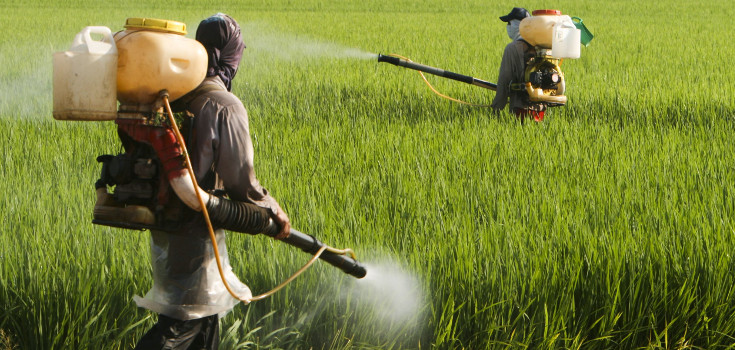Most of the Glyphosate Sprayed in CA is Applied in Poor Areas
Most of the Glyphosate Sprayed in CA is Applied in Poor Areas
More than 50% sprayed in 8 most impoverished counties
The Center for Biological Diversity, the Center for Environmental Health, El Quinto Sol de America, Californians for Pesticide Reform, the Center for Food Safety and the Pesticide Action Network released a report earlier this week that claims that more than half of the glyphosate sprayed in California is applied to the state’s 8 most impoverished counties.
The Center for Biological Diversity, the Center for Environmental Health, El Quinto Sol de America, Californians for Pesticide Reform, the Center for Food Safety and the Pesticide Action Network released a report earlier this week that claims that more than half of the glyphosate sprayed in California is applied to the state’s 8 most impoverished counties. [1]
According to the report, the populations in these counties are predominantly Hispanic or Latino, which suggests that use of the main ingredient in Monsanto’s Roundup herbicide is distributed unequally along both socioeconomic and racial lines.
“We’ve uncovered a disturbing trend where poor and minority communities disproportionately live in regions where glyphosate is sprayed,” said Dr. Nathan Donley, a staff scientist with the Center for Biological Diversity. “In high doses glyphosate is dangerous to people, and California can’t, in good conscience, keep allowing these communities to pay the price for our overreliance on pesticides.”
In 2013, 54% percent of glyphosate used in California was applied in Tulare, Fresno, Merced, Del Norte, Madera, Lake, Imperial and Kern counties, according to the report, Lost in the Mist: “How Glyphosate Use Disproportionately Threatens California’s Most Impoverished Counties.”
The analysis lends support to a 2014 California Department of Public Health study that found thatHispanic children were 46% more likely to attend schools near harmful pesticide use than white children, and 91% more likely than white children to attend schools near the highest pesticide use. [2]
“The disproportionate concentration of glyphosate in our region is alarming and worrisome,” said Isabel Arrollo, executive director of El Quinto Sol de America, based in Tulare County. “It is imperative to protect the health of our communities, and any action to better protect health should not be dismissed as being premature. Health matters.”
“No one should be needlessly exposed to chemicals like glyphosate, that may cause cancer and other health problems,” said Caroline Cox, research director at the Center for Environmental Health. “It’s especially troubling that communities of color who are already at serious risk from chemicals in their environment are the most likely to suffer from exposures to this dangerous pesticide. The state must take the lead in protecting all Californians from glyphosate.”
Glyphosate is the most widely used herbicide in the world. In March, the World Health Organization (WHO) said the chemical is “probably carcinogenic to humans.” California is currently toying with the idea of declaring the Roundup ingredient as a carcinogen.
Monsanto is fighting the proposed ruling. In October, the agribusiness giant officially submitted a comment to the California Office of Environmental Health Hazard Assessment (OEHHA), asking them to scrap the plan. [3]
Listing glyphosate as a cancer cause “has the potential to deny farmers and public agencies the use of this highly effective herbicide,” Monsanto said in its public filing. “Global regulatory authorities… agree that glyphosate is not carcinogenic.”
But according to the Centre for Research on Globalization, Sustainable Pulse recently uncovered documents from 1991that show that the U.S. Environmental Protection Agency (EPA) knew as far back as 1985 that glyphosate causes cancer. The committee went on to classify glyphosate as a Class C Carcinogen with “suggestive evidence of carcinogenic potential.” [4]
In July, the International Agency for Research on Cancer issued a reportwhich examined the latest research on glyphosate and concluded that it is definitely carcinogenic to animals in laboratory studies and that human exposure is linked to a higher risk of developing blood cancers such as non-Hodgkin’s lymphoma. [5]
An estimated 90% of all processed food contains glyphosate residues.
| About Julie Fidler: | |
| Julie Fidler is a freelance writer, legal blogger, and the author of Adventures in Holy Matrimony: For Better or the Absolute Worst. She lives in Pennsylvania with her husband and two ridiculously spoiled cats. She occasionally pontificates onher blog. | |
Other Popular Stories:

Post a Comment